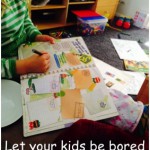By Anna Partridge

When presenting at the SA Wellbeing Leaders in Schools Conference a few weeks ago, I discussed many different theories and ideas behind whole school wellbeing programs and their contextual nature to the school. Two ideas really resonated with the audience – the first was the idea that a wellbeing program needs to comprise both a proactive and reactive approach. We need to support students who are experiencing distress through a counselling program, referrals and a solid pastoral structure AND we need to integrate positive education and visible wellbeing into the curriculum and pedagogy to ensure all students have the skills to overcome setbacks and engage well in their academics, cocurricular and life.
The second idea that resonated with the audience was the interplay between wellbeing and behaviour. During lunch, after my presentation, I had some wholesome discussions about what comes first, if wellbeing and behaviour can work in harmony, and what needs to be in place so we can support students’ wellbeing and behaviour. Over the few weeks since, I have thought a lot about this when looking at school structures and programs and have had some discussions with teachers and leaders at my own school – it is an interesting space to be in.
Earlier this year, it was reported that Australian classrooms have some of the poorest classroom behaviours in the world. The OECD’s disciplinary climate index measures classroom disorder and disruption that’s consistently been worsening in Australia, making it among the worst in the developed world. It is imperative to address this to support educators as well as student learning.
When I first started looking into developing resilience in children in 2010 and how it worked as an antidote to mental health issues, I came across the Positive Discipline Association (PDA) in the US, which was based on positive parenting. I trained as a PDA Instructor and found it interesting that ‘discipline’ and ‘positive’ were part of the same idea.
The common thread that ran through the premise of positive parenting was being ‘kind and firm’ as a parent and the importance of setting up clear boundaries, consistency, and expectations for children to thrive. As a parent, I really resonated with this. I liked the idea that when you had the boundaries in place, both parents were consistent, and there was an expectation to do something a certain way; children learned quickly about what was right and what was wrong. It reduced many of the escalating behaviours for parents and for the children. I continued this journey for some time, working with many different families to embed positive parenting ideas and incorporating the importance of boundaries, consistency and expectations into my book on raising resilient children.
Let’s now move to schools – I think the same idea applies.
I am currently reading Paul Dix’s book, ‘When the Adults Change, Everything Changes: Seismic Shifts in School Behaviour’. Paul calls himself an award winning behaviour specialist from the UK and has based his book on setting up clear boundaries and following through (being consistent) to support students to learn. When reading it, I align it with the ideas students engage when they know the expectations. When there are high expectations, students will jump to reach them.
While Paul’s book is based on improving behaviours, the ideas of consistency, routines and expectations follow the premise of Visible Wellbeing, a pedagogy to improve wellbeing and engagement in the classroom. When we teach with a wellbeing pedagogy, students can better engage in their learning and regulate their emotions to learn. This involves practices around teaching such as brain breaks, restorative conversations, classroom rules, consistency and a clear and dependable routine and high-impact teaching strategies to engage students. The connection between wellbeing and behaviour here is a direct line.
When students know the boundaries and expectations that are applied consistently, there are improved behaviours and strategies to engage in learning. There is also an improved sense of belonging for students to schools.
A great example of this is in a primary classroom when teachers start the morning with circle time. It is a simple practice, based on the work of Dr Sue Roffey, where students sit in a circle, and each child is given an opportunity to speak when the teacher says good morning to them. It might be asking a simple question like ‘What are you grateful for this morning?’ and each child has time to say their answer – they are not interrupted or judged. It is a safe circle where everyone has a turn and is accepted. This takes time to set up with high expectations, set routines and behaviours and consistency every morning. When students know it is part of the morning routine, it increases a sense of belonging, improves student voice and reduces student lateness because they want to be part of the special circle.
I discussed the slide in Fig 1 as something that has guided my wellbeing thinking at the conference. The model in the slide is a mental health wellbeing promotion in schools model from the 1970s in US. Anyone who has worked in a school implementing PBIS Positive Behaviour in Schools or SWPB School wide positive behaviours will know this model – although inverted. In the model below from the 1970s, it was important to create an environment conducive to promoting social and emotional wellbeing as Tier 1, which is ensuring a positive school culture. In the PBIS Model, Tier 1 promotes social, emotional and behaviour prevention interventions across the whole school.
As shown in the model below, by Tier 4 we are working to support 3-12 % of students who require mental health intervention. On the PBIS model, this is the top tier (Tier 3), which refers to the pointy 1-5 % end of students who require specialised, individual support for high-risk behaviours. So, there has been a shift from supporting social and emotional development through a tiered system in the 1970s to including behaviour as part of this model in the PBIS model. This shift blurs the lines between wellbeing/social emotional learning and behaviour and questions if you can have one without the other.

Fig 1. My slide from the SAWLIS Conference on Mental Health Wellbeing Promotion in Schools Model.
One area where wellbeing and behaviour are a fine line is when school roles pertain to wellbeing and behaviour, such as a year coordinator. In two roles I have worked in, I was heading up wellbeing and discipline in the year group or the school. When I was in meetings with parents and was giving consequences or even suspending a student for breaking the school rules, parents would say, ‘but you are head of wellbeing’. I had nowhere to go except the child had not followed the rules of the school, and it required a fair and consistent consequence. If I go back to the notion of being ‘Kind and Fair’, wellbeing is not saying you don’t have consequences for poor behaviour choices, but consequences need to be done in a way that is supportive of the individual and their family with restorative conversations or using the Situation-Behaviour-Impact model of feedback. It is a fine line to walk, and it won’t always be right.
The key to exploring the juxtaposition or interplay between wellbeing and behaviour is to examine the school culture to ensure it is positive at all levels of staff, students and parents. It is then about developing consistency of practice in each classroom and between teachers, setting up firm boundaries through structures, policies, procedures and school rules, creating robust routines into the school day and maintaining high expectations across the school. It is about being kind and firm and taking everyone in the school on the journey to understand why we need both to succeed.
If the interplay between wellbeing and behaviour is something you would like to explore further at your school, please get in contact with Anna through LinkedIn https://www.linkedin.com/in/anna-partridge-education/ .







Sorry, comments are closed for this post.